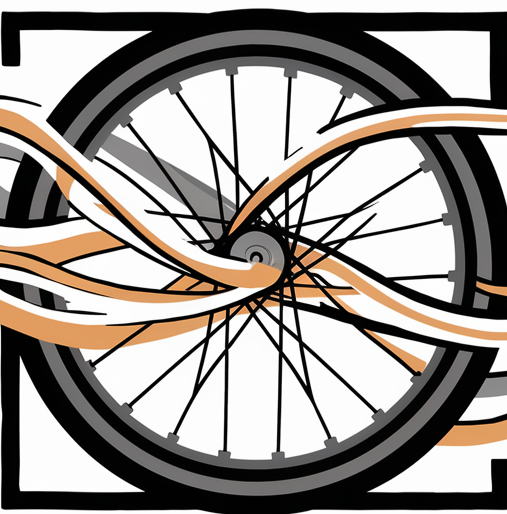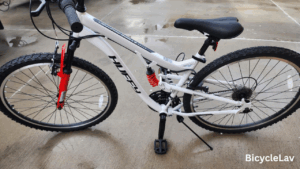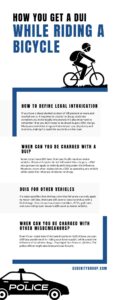How fast can you go on a bicycle? The answer varies widely depending on factors like your biking experience, the type of bike you ride, and the terrain you choose. A seasoned cyclist can reach top speeds of over 30 miles per hour on flat surfaces, while beginners might pedal comfortably at 10 to 15 miles per hour.
Cycling enthusiasts often debate speed, and many strive to push their limits. Whether you’re racing against friends or simply enjoying a leisurely ride, understanding your potential speed can enhance your experience. So, lace up those shoes and get ready to hit the road!
How Fast Can You Go on a Bicycle?
When you hop on a bicycle, the thrill of speed is an exhilarating part of the ride. Bicycling not only serves as a great form of exercise but also offers an effective means of transport and recreation. But how fast can you actually go on a bicycle? Let’s dive into this exciting subject, unraveling the factors that influence speed and giving you tips to maximize your cycling velocity.
Understanding Bicycle Speed
Before we explore how fast you can go, let’s understand what speed means in cycling. Speed on a bicycle usually refers to how fast the bike can travel over ground. It is measured in miles per hour (mph) or kilometers per hour (km/h). The maximum speed you’ll achieve on a bike can vary depending on several factors.
Factors Influencing Bicycle Speed
When it comes to cycling speed, numerous factors come into play:
- Rider’s Fitness Level: A well-trained cyclist can maintain higher speeds compared to a casual rider.
- Bicycle Type: Different bikes are built for different speeds. Road bikes, for instance, are designed to be fast, while mountain bikes are built for durability and off-road performance.
- Terrain: Smooth, flat roads allow for faster speeds, while hills and rough terrain can slow you down.
- Wind Resistance: Cycling into the wind can significantly reduce speed, while a tailwind can boost speed.
- Weather Conditions: Rain, snow, and extreme temperatures may affect performance.
- Equipment and Gear: Wearing the right clothing and using bike components designed for speed can enhance cycling performance.
Speed Ranges for Different Types of Bicycles
Not every bike is created equal. Let’s take a closer look at how the type of bicycle affects the speed you can achieve.
Road Bikes
Road bikes are crafted for speed and efficiency. Their lightweight frames and thin tires allow for faster speeds. Here are some insights:
– **Average Speed:** Most casual riders can reach speeds between 12 to 16 mph (19 to 25 km/h).
– **Experienced Cyclists:** Riders who train regularly can maintain speeds around 16 to 20 mph (25 to 32 km/h) over long distances.
– **Competitive Cyclists:** Pro racers can achieve speeds well above 25 mph (40 km/h) during races.
Mountain Bikes
Mountain bikes prioritize control and sturdiness over speed. Their design is built for off-road trails:
– **Average Speed:** Casual mountain bikers typically ride at speeds between 8 to 12 mph (13 to 19 km/h).
– **Experienced Riders:** Skilled mountain bikers can reach speeds of 12 to 15 mph (19 to 24 km/h) on technical trails.
– **Downhill Racing:** In downhill mountain biking, speeds can exceed 30 mph (48 km/h) when descending steep slopes.
Hybrid Bikes
Hybrid bikes combine features of road and mountain bikes, offering versatility:
– **Average Speed:** Most riders enjoy speeds between 10 to 15 mph (16 to 24 km/h).
– **Comfort and Casual Riding:** Hybrid bikes tend to offer a comfortable ride for leisurely cycling around town or on paved trails.
Electric Bikes (e-bikes)
E-bikes have gained popularity for their power assistance:
– **Average Speed with Pedal Assist:** Most e-bikes can reach speeds of 15 to 20 mph (24 to 32 km/h) with pedaling.
– **Speed Limitations:** Many e-bikes have a top speed of around 28 mph (45 km/h) when using the electric motor without pedal assistance.
Speed Records in Cycling
Cycling has a rich history of speed records, from world-class athletes to specialized bikes. Some notable records include:
The Fastest Speed on a Bicycle
– **World Record:** The fastest recorded speed on a bicycle is 183.932 mph (296.009 km/h). This record was set by Denman E. Haines in 1995 during a downhill run in a specially designed aerodynamic bicycle.
Time Trials and Races
– In competitive cycling, time trials showcase the speed of athletes racing against the clock. Professional cyclists can complete 40 kilometers in under 50 minutes, translating to an average speed of over 29 mph (46 km/h).
Maximizing Your Speed on a Bicycle
Whether you’re training for a race or simply want to increase your cycling speed, several strategies can help you achieve your goals.
Improve Your Fitness
Building your cycling endurance and strength can directly affect your speed. Here are some tips:
– **Regular Training:** Create a training schedule that includes long rides, interval training, and hill workouts.
– **Crosstrain:** Engage in other activities like running or swimming to enhance your overall fitness.
– **Stay Hydrated and Eat Well:** Proper nutrition plays a significant role in your performance.
Optimize Your Bike Setup
Your bicycle’s design and adjustments can greatly impact your speed:
– **Weight Reduction:** Use lightweight materials for components like wheels and frames.
– **Proper Fit:** Ensure your bike fits well. A proper fit can lead to better power transfer and control.
– **Tire Selection:** Choose tires with low rolling resistance for smoother rides.
Technique Matters
Effective cycling technique can improve your speed:
– **Body Position:** Maintain an aerodynamic position to reduce wind resistance. Lean forward and keep your elbows tucked.
– **Pedaling Technique:** Focus on smooth, circular pedaling rather than just pushing down. Engaging your hamstrings can enhance speed.
– **Shifting Gears:** Use the appropriate gear to match terrain. Shift to a lower gear on inclines and a higher gear on flat ground.
The Role of Aerodynamics in Cycling Speed
Aerodynamics plays a key role in how fast you can cycle. As you ride faster, air resistance increases, making it harder to maintain speed. Here are ways to enhance your aerodynamic efficiency:
Body Positioning
– Keeping your body low and compact reduces air drag.
– Tucking your elbows in can also help streamline your shape.
Bike Design
– Aerodynamic bike frames and components can lower air resistance.
– Aero handlebars and helmets can also significantly reduce drag.
Clothing Choices
– Wearing tight-fitting, aerodynamic clothing minimizes wind resistance compared to loose apparel.
Environmental Factors Affecting Speed
Many factors in the environment can significantly impact how fast you can ride your bicycle:
Wind Conditions
– **Headwinds:** Riding against the wind can slow you down considerably.
– **Tailwinds:** A nice breeze at your back can propel you forward, making your ride easier and faster.
Weather Conditions
– **Rain and Wet Roads:** Wet conditions can reduce traction and increase rolling resistance, slowing you down.
– **Temperature:** Hot weather can impact your stamina, while cold conditions could encourage faster speeds if dressed appropriately.
Road Surface
– Smooth pavement allows for faster speeds compared to gravel, dirt, or pothole-filled roads.
Speed Training Techniques
If you’re eager to improve your cycling speed, consider incorporating specific training techniques into your routine:
Interval Training
– Engage in alternating periods of high-intensity cycling with lower-intensity recovery. For example, sprint for 30 seconds, then rest for 1-2 minutes.
Hill Repeats
– Find a hill and practice climbing it multiple times. This builds strength and power, leading to improved speed on flat terrain.
Long Rides
– Take longer rides at a moderate pace. Building endurance increases your ability to maintain higher speeds over greater distances.
Understanding Speed Limitations
While it’s natural to strive for faster speeds, it’s essential to recognize your limits and ride safely.
Health and Safety
– Always wear a helmet for protection.
– Be aware of your surroundings, especially in traffic or busy areas.
Legal Speeds
– Some regions have speed limits for bicycles, especially on public roads or bike paths. Always adhere to local rules.
Personal Goal Setting
– Set realistic goals based on your current fitness level and experience. Gradually increasing speed is more sustainable and safer.
Finding out how fast you can go on a bicycle depends on multiple factors, including your fitness level, the bike you ride, and the terrain. By understanding these elements and implementing effective strategies, you can enhance your cycling experience and speed. Whether you’re enjoying a leisurely ride or racing competitively, the joy of cycling lies in the journey and the freedom it brings.
How to ride 26 mph with minimal effort
Frequently Asked Questions
“`html
What factors influence the speed of a bicycle?
Several factors influence how fast you can go on a bicycle. These include the type of bike you are riding, your physical fitness level, the terrain, and the weather conditions. For example, road bikes are designed for speed and typically allow for faster riding compared to mountain bikes. Your weight and aerodynamics also play significant roles; a lighter bike and a more aerodynamic riding position can help increase your speed. Additionally, riding on a flat surface is generally faster than going uphill or on rough terrain.
What is the fastest recorded speed on a bicycle?
The fastest recorded speed on a bicycle is around 183.932 km/h (114.0 mph), achieved by Denise Mueller-Korenek in 2018. This record was set while drafting behind a pace vehicle on a specialized bicycle. While such speeds are exceptional and require specific conditions, competitive cyclists often reach speeds of 50-70 km/h (31-43 mph) in sprint scenarios during races.
How does terrain affect cycling speed?
Terrain has a significant impact on cycling speed. Flat surfaces allow for faster speeds as cyclists can maintain momentum and apply their power effectively. Climbing uphill slows cyclists down as they must overcome gravity, while downhill sections can increase speed dramatically due to gravitational pull. Additionally, rough or uneven surfaces can create drag, making it harder to maintain high speeds compared to smooth pavement.
Can cycling speed vary based on bike type?
Yes, bike type greatly affects speed. Road bikes are typically built for speed, featuring lightweight frames and thin tires that reduce rolling resistance. In contrast, mountain bikes prioritize durability and traction, sacrificing some speed for off-road capability. Hybrid bikes combine features of both but may not excel in one specific area. Therefore, choosing the right bike for your riding style and environment is crucial for optimizing speed.
How does a cyclist’s fitness level impact speed?
A cyclist’s fitness level directly affects their speed. Well-conditioned cyclists can exert more power over longer periods, allowing them to achieve and maintain higher speeds. Training enhances cardiovascular endurance, leg strength, and overall cycling efficiency. Additionally, technique plays a role; experienced cyclists often use better pedaling and braking techniques, further increasing their speed capabilities.
“`
Final Thoughts
Speed on a bicycle varies greatly depending on several factors, including the rider’s fitness level, bike type, and terrain. A casual cyclist might average around 12 to 16 mph, while competitive cyclists can sustain speeds between 20 to 25 mph.
Professional racers often reach speeds exceeding 30 mph during sprints. Ultimately, how fast can you go on a bicycle depends on your commitment to training and the equipment you use. Embrace the journey of improvement, and you might just surprise yourself with your speed.


